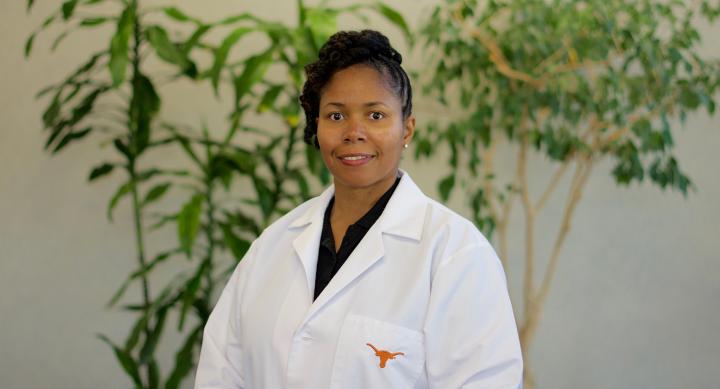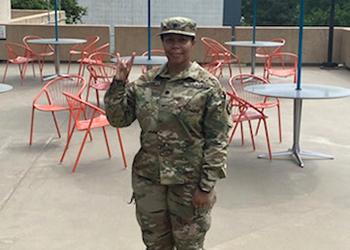
UT Austin School of Nursing clinical assistant professor Shalonda Horton is waiting on some important news. As a United States Army Reserve Public Health Nurse, she was notified on Friday, April 3rd that she needed to prepare for mobilization to assist the civilian population amid COVID-19. However, her orders have yet to come in, while some members of her unit, the 7454th Medical Battalion, have already been sent.
Entering into her twentieth year in the reserve, Shalonda has yet to be mobilized during a crisis situation, though she has received many calls to prepare for them. She has trained extensively for every crisis scenario. Now an expert, she teaches combat medics as well as nursing students enrolled in public health courses at UT Austin. Her focus is often crisis relief and health promotion.

Looking back on her parallel careers, she believes the military made her health care profession a reality by providing her with a free education. “I only had a year of tuition available to me through a scholarship. My best friend was in the ROTC program and told me about their scholarships for military nurses. They would provide a year of tuition for two years of guaranteed service through active duty or the reserves. I applied and received the scholarship. The military really helped me to get on the right path to nursing,” said Dr. Shalonda Horton.
After graduation she applied for active duty to fulfill her service requirement and was one of only two nurses to be admitted. During her four and a half years on active duty Shalonda served in health care facilities in South Korea, Georgia and Texas; in almost every aspect of health care including mental health and oncology. “I did not want to be assigned to oncology. I always said I wouldn’t do it. But at Ft. Sam Houston I was assigned to the department, and now I am so appreciative because that experience of intense and intimate patient care with soldiers and their families really solidified my foundation in nursing.”
Shalonda says her transition from the military into civilian nursing wasn’t difficult due to her experience in patient advocacy and leadership. She also chose to enter the UT Austin Master of Science in Nursing (MSN) Program in order to enter public health nursing. After graduating, she joined the UT Austin School of Nursing faculty teaching public health clinicals in 2006. She then entered their PhD program. After graduating she began teaching in the Alternate Entry MSN Program and considers it a blessing to prepare future nurses.
In 2005, Shalonda was notified she may be mobilized to serve on the front line of Katrina. When the reserves determined not to send her, she used the opportunity to teach her nursing students. Working with the City of Austin, she was able to assign students to clinical placements in the city’s shelter at the convention center. Students received invaluable experience visiting with the displaced, taking health assessments and providing them with on-site health care support.
Disappointed that it often takes a crisis like Hurricane Katrina or COVID-19 to focus on why public health is such a critical piece of infrastructure, Shalonda added that she is hopeful it leads to larger changes and funding, “Public health is essential, and it's in every aspect of our lives like hand washing, clean food, running water and even seat belts.”
While Shalonda waits for orders from her unit, she continues to teach her classes and pull from her experience as a soldier. It is possible she will not be mobilized during this time, but she takes great comfort that she taught many of the medics and nurses that are currently serving.

